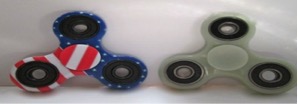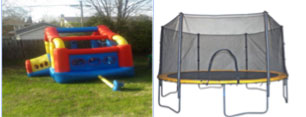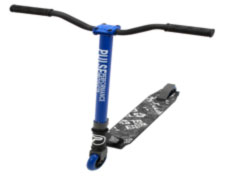PARENTS BEWARE!!
WHAT’S “HOT” THIS SUMMER IS NOT ALWAYS SAFE
W.A.T.C.H. Releases Its 2017 Summer Safety Report For Parents and Caregivers
FIDGET SPINNERS, ELECTRIC-SHOCK DROWNINGS, RECALLED TOYS ONLINE, BOUNCE HOUSES
TOP W.A.T.C.H.’S LIST OF 10 POTENTIAL SAFETY CONCERNS THIS SUMMER
CONTACTS: Alan Eisner (alanseisner@hotmail.com) or (617) 320-3122; Lorraine Falling (Falling@comcast.net) or (561) 350-9299
(Boston, MA- June 21, 2017) World Against Toys Causing Harm, Inc. (W.A.T.C.H.) kicked off the first day of summer with important safety information for parents and caregivers to help keep kids safe during the warm weather months and year round. Noting that hospital emergency departments will treat about 2.5 million children injured in accidents this summer, W.A.T.C.H. today stressed the urgency of raising awareness about children’s products that can cause serious injury.
At a press conference at Franciscan Children’s in Boston, Consumer Advocates Joan E. Siff, President of W.A.T.C.H., and James A. Swartz, a nationally known trial attorney and Director of W.A.T.C.H., showcased 10 top “Summer Safety Traps” as examples of the many different types of hazards parents and caregivers can avoid to safeguard children throughout the summer season (SEE ATTACHED LIST). Siff and Swartz said the combination of warm weather and school vacation is an opportunity for children to enjoy the outdoors, but can also be a time for injuries. Summer months account for nearly half of all injury-related deaths to children, they noted.
Fidget spinners, hoverboards: Topping this year’s list are popular toys and other children’s products, such as fidget spinners and hoverboards that, while exciting and intriguing to children, have the potential to lead to tragic or deadly consequences. Although fads can generate a sense of excitement and urgency when buying toys for children, W.A.T.C.H. cautions parents to complete their own due diligence to make more informed decisions when purchasing toys. “Do not be lulled into a false sense of security that a toy is safe simply because it is popular,” said Siff. There is no guarantee of safety simply because a toy is in high demand, promotes a superhero from a blockbuster movie, or is made by a well-known manufacturer. Recently, serious concerns over the safety of fidget spinners have been raised. A girl in Texas choked while playing with a fidget and had to have a part of the toy removed from her esophagus. Another wildly popular fad is hoverboards. At its last several conferences, W.A.T.C.H. addressed the hazards associated with hoverboards and lithium batteries. Yet, hoverboards and lithium batteries remain on store shelves, despite continuing to be linked to tragic consequences, including numerous injuries and deaths from fires. In April, babysitters recued eight children trapped in a house fire allegedly caused by a hoverboard that was charging. In May, the CPSC requested consumers to immediately stop using LayZ Board self-balancing scooters (hoverboards) due to the risk of fire after two young girls tragically died in Harrisburg, PA. “Hoverboards continue to be linked to fires, children are dying – – with no sense of urgency on the part of the manufacturers and retailers,” said Swartz. Added Siff, “It is a tragedy when a child dies but when that death could have been prevented it’s inexcusable. The on-going injuries and deaths associated with hoverboards continue to be a wakeup call that products should be tested before they reach consumers and not tested on consumers.”
Recalled Products Sold Online: W.A.T.C.H. highlighted the issue of recalled children’s products being sold online, an issue that continues to unnecessarily put children at risk. Accompanying the increased convenience of online shopping platforms is the increased risk of some unique safety considerations, such as the inability to monitor products posted on second-hand sale sites. “Consumers may expect that there are checks and balances in place to prevent the online sale of recalled toys, toys already deemed to be unsafe, but unfortunately this is usually not the case,” said Swartz. Since 2014, when the CPSC identified recalled products being sold on Craig’s list, online platforms continue to be a venue where recalled children’s toys and other products can reach consumers. The difficulty in purging the market of goods that have been recalled shows that, while recalls are necessary, they are not a cure-all. “Once these toys are on the market, they can reappear for resale online or sit like a time bomb in a child’s toy box,” said Swartz. In a 12- month period alone, there were 13 toy recalls, representing over 1,606,410 units of dangerous toys available for sale in the US and Canada. Siff noted, “Recent toy recalls are a further reminder that not all toys are safe and, particularly when children’s safety is at stake, we need to remain vigilant.”
Electric Shock Drowning, Water Safety: Water safety is another vitally important issue, particularly in this warm weather as families look to cool down at beaches and pools– a time for fun, but also a time when there is typically an increase in reported drownings. One lesser known hazard, in part due to lack of reporting, is electrical shock drowning near docks and marinas. Recently two women drowned of suspected electric shock while swimming near a pier in Tuscaloosa, Alabama. Last year in Alabama, a fifteen-year-old girl died from electric shock while swimming in a lake near her family’s house. “One of our goals today is to be proactive and raise awareness about hazards that may not be widely known but still may be linked to deaths each summer, such as swimmers getting electrocuted from nearby wiring,” said Siff.
In addition to electric shock hazards, this year’s Summer Safety Report cautions families to be aware of water hazards that may be in their own backyards. Children under 5 years old are most at risk, representing nearly seventy-seven percent of all drowning deaths to children. About eighty-seven percent of fatal drownings to children under 5 years old occurred at homes. There were 346 reported fatal child drownings in pools and spas in 2014 involving children younger than 15. Just last week a young woman tragically drowned at Whitten Reservoir in Douglas State Forest. Whether enjoying family time at a public beach or at a friend’s barbecue, knowing what water traps have led to injuries and deaths in the past can save lives and reduce drownings, including: baby pools, inflatable pool toys, gardening buckets and swimming pool covers filled with water. Siff cautions, “Drowning is often quick and silent – keep your guard up and review water safety precautions to help keep kids safe around water this summer.”
Other safety concerns highlighted in this year’s report include toys with improperly secured batteries, wheeled toys used without protective gear, helmet straps and drawstrings unsuitable for playgrounds, and toys with blunt edges and projectiles that have the potential to cause serious eye injuries. Continued injuries and deaths to children from drowning, hoverboard fires, and toys with small parts and other hazards reveal the urgent need for increased awareness, safer products, better pre-market testing, and a more responsible marketplace to help prevent injuries. In the meantime, parents can avoid many hazards relating to toys and recreational activities by remaining vigilant, identifying safety red flags, and knowing the facts. Swartz advised parents to “remember to regularly examine the toys in their child’s toy box.”
w.a.t.c.h.’s top 10 summer safety traps
for 2017
(Fidget Spinners, electric-shock drownings and recalled toys online are examples of some of the many hazards to watch out for so children can have a safer summer)
| TRAP: 1 | FIDGET SPINNERS | |
|
|
||
| HAZARD: | Potential For Choking! | |
| W.A.T.C.H. OUT! | There is not always safety in numbers: Despite their popularity, fidget spinners and other fad toys may not be safe for children.Fidget spinners have fallen apart and the small pieces could potentially become lodged in a young child’s throat. | |
| FACTS: | Although the CPSC is investigating the fidget spinners due to the risk of choking when the spinners fall apart, Fidgets remain one of the hottest selling toys this summer. Two recent cases involve a ten-year-old in Texas and a five-year-old in Oregon. Both children choked on a part of a fidget spinner and were taken to the hospital. One child had to have the piece of the spinner surgically removed. | |
| TO DO: | Do not have a false sense of security that a toy is safe because it is popular. Know the facts and what injuries may have been reported before choosing toys for children. Avoid toys for young children that may present a choking hazard. | |
| TRAP: 2 | ELECTRIC-SHOCK DROWNINGS |
|
|
|
| HAZARD: | Potential for Electrocution and Drowning! |
| W.A.T.C.H. OUT! | Swimmers have drowned near docks, marinas, and boats due to electrical currents in the water. Children swimming could be at risk of this little-known killer that is typically the result of wiring from a nearby dock or marina. Electric shock drownings, known as “silent killers,” are a serious but largely preventable hazard with increased public awareness. |
| FACTS: | About 10 people die in the U.S. every day from accidental drowning. Although hundreds of people are suspected to have lost their lives from electrically charged water, electric shock is difficult to track and reporting does not usually reflect whether electric shock was involved. Recently in Tuscaloosa, Alabama two women drowned of suspected electric shock while swimming near a pier. Last year in Alabama, a fifteen-year-old girl died from electric shock while swimming in a lake near her family’s house. In 2012, two children and one woman lost their lives in a single 4th of July weekend from electric shock drowning. There is no visible sign when water contains fatal levels of electricity and water can become charged in seconds. Even low-level currents from electrical sources near water, such as wet outlets on docks, can be fatal to swimmers. |
| TO DO: | There is very little awareness about this issue that can claim lives each year. Increased awareness can help prevent drownings from electrically charged water:
|
| TRAP: 3 | HOVERBOARDS and LITHIUM BATTERIES |
|
|
|
| HAZARD: | Potential for Impact and Burn Injuries! |
| W.A.T.C.H. OUT! | One of the most popular outdoor items since last year, self-balancing scooters, better known as hoverboards, remain a serious safety concern. Since 2015, when they first made headlines for their tendency to spontaneously burst into flames, hoverboards remain top on W.A.T.C.H.’s list of products to avoid. At its last several conferences, W.A.T.C.H. addressed the hazards associated with hoverboards and lithium batteries. Remarkably, despite W.A.T.C.H.’s efforts and the numerous reports of hoverboards being associated with fires, injuries and deaths, hoverboards are readily available for purchase and continue to put consumers at risk. Dangerous products should never reach the marketplace in the first place; however, if a product being sold has endangered consumers, there should be a sense of urgency on the part of manufacturers and retailers to prevent tragedies from recurring. Toys are embellishments of life, not necessities, and there is no excuse for manufacturing, importing and distributing a toy that has the potential to kill a child. |
| FACTS: | Hoverboards and lithium batteries continue to be linked to tragic consequences, including numerous injuries and deaths from fires. The lithium-ion battery packs in the self-balancing scooters can overheat, posing a risk of fire and/or explosion. A few facts from the last two years:
Hoverboards that pose a risk of serious injury from fire may still be found in people’s homes and for sale. The recent history with hoverboards shows the importance of pre-market testing and better-designed products to prevent unnecessary injuries and deaths. Consumers should not be used as a testing ground for unsafe products. |
| TO DO: | Avoid hoverboards and other products with a history of potentially fatal safety concerns- including fire and impact injuries! |
TRAP: 4 |
TOYS WITH BATTERIES AND SMALL PARTS |
 |
|
| HAZARD: | Potential for choking injuries! |
| W.A.T.C.H. OUT! | Recently there have been numerous recalls addressing the issue of toys with parts that can detach, posing a choking hazard to young children. These hidden hazards, difficult for parents to identify at the time of purchase, must be prevented with better design and pre-market testing before they reach toy store shelves. Although a year-round concern, toys with small parts have earned a place as a summer safety trap due to the continuing volume of recalls from these types of dangerous toys. The above-pictured Hobby Lobby Light Up Spinner Toy was recalled because the battery cover can detach exposing a small coin cell battery posing an ingestion and choking hazard to young children. This is only one example of a toy over the years that puts children at risk when batteries like the coin battery pictured above are exposed. The above-pictured plush toy, Chewie The English Bulldog, is another example of a toy recalled this year due to small parts, the plastic eyes, that can detach creating a choking hazard for young children. |
| FACTS: | The estimated seven (7) recalls for choking hazards in the last twelve months is evidence of the continued problem of small parts on toys sold to young children. |
| TO DO: | This summer, continue to watch out for toys that are choking hazards for young children! Be familiar with the types of choking and ingestion hazards associated with toy injuries and deaths in the past. Hidden hazards reappear year after year including toys with covers that can fall off exposing small batteries. Check toys for long slender parts, pieces that could easily break off, and soft materials that could be ingested and block a young child’s airway. |
| TRAP: 5 | BABY POOLS, GARDEN BUCKETS, POOL COVERS |
|
|
|
| HAZARD: | Potential for drowning! |
| W.A.T.C.H. OUT! | Shallow bodies of water in backyards are often overlooked as water hazards for young children. Gaps in pool covers as well as sagging pool covers that can collect water may put children at risk of drowning. Baby pools are portable and convenient to assemble; yet the potential for serious injury is easily overlooked. Baby pools are often left filled with water with no barriers to prevent access. Water in backyard baby pools and other containers, such as buckets and fountains, may be inviting to children but can potentially and tragically lead to drowning. |
| FACTS: | Young children can drown in as little as 2 inches of water. In a 2017 report, the CPSC re-confirmed that most water submersion incidents to children under five-years-old occur at residential locations. Children have drowned in water collected in unexpected places, such as pool covers. Another report for non-pool/ non-spa injury statistics, which typically involve smaller bodies of water such as buckets and fountains, emphasized the seriousness of the risk that even shallow water poses to children: 434 children under 5 (2006-2010) died and 233 children under 5 (2006-2010) were injured from non-pool and non-spa related submersions. 92% of these injuries and deaths occurred at home. The importance of multiple layers of effective barriers between children and water hazards is highlighted by the number of pool and spa-related submersion incidences: In 2014, a reported 346 children under 15 years old drowned in pools and spas. From 2014 to 2016, an estimated 5,900 children each year under 15 years old were seen in hospitals for submersion related injuries. |
| TO DO: | Checking water safety measures at home is an important way to kick-off the summer. Never leave baby pools and other containers with water unattended in your backyard–empty the water after each use and turn upside down so they cannot collect rainwater! Regularly check all safety measures used around the home and backyard to make sure they are secure and adequate including: pool covers, alarms, automatic-locking gates, window guards and more. See what needs to be repaired and what other safety measures should be added. When it comes to water safety, multiple barriers of protection should be used to protect children. |
| TRAP: 6 | BOUNCE HOUSES and BACKYARD TRAMPOLINES |
|
|
|
| HAZARD: | Potential for impact and other serious injuries! |
| W.A.T.C.H. OUT! | Backyard activities that are designed for children to jump and bounce can be an invitation for injury. Bounce Houses: Colorful, inflatable bounce houses are frequent staples at backyard birthday parties during the summer months. However, the inherent potential danger of a “toy” that invites children to jump and bounce in close proximity to each other is not worth the risk. In addition, there have been numerous reports of these bounce houses falling over or being blown away. In April, 5 children in South Carolina went to the hospital with injuries after a bounce house became airborne. Many similar incidents have led to injuries. Backyard Trampolines: Although popular among children and adolescents, backyard trampolines have been associated with potentially catastrophic injuries including fractures, cervical spine injuries and paralysis. Netting, padding and adult supervision have not prevented the numerous injuries relating to trampoline use and may provide a false sense of security. Trampolines are not toys and should not be used at homes. |
| FACTS: | Bounce Houses: Bounce houses and other inflatable amusements for children have led to injuries and deaths. From 2003 to 2013, inflatable amusements were responsible for approximately 113,272 injuries (90% involved moon bounces aka bounce houses) and 12 reported deaths. Backyard Trampolines: Trampolines cause about 100,000 injuries each. There were 22 trampoline-related deaths between 2000 and 2009. Most injuries from trampolines occur at private homes (95% of fractures). One in every 200 injuries result in permanent neurological damage. The American Academy of Pediatrics has warned against the use of home trampolines due to the potential for permanent and devastating consequences. |
| TO DO: | Avoid bounce houses! Do not use backyard trampolines! |
| TRAP: 7 | WHEELED TOYS: NON-MOTORIZED SCOOTERS |
|
|
|
| HAZARD: | Potential for impact injuries, traumatic brain injuries, death! |
| W.A.T.C.H. OUT! | Non-motorized scooters are responsible for the most toy-related injuries. As with other toys with wheels, never let children ride non-motorized scooters near traffic and always use appropriate safety gear, such as helmets and other protective padding. |
| FACTS: | An estimated 53,000 injuries associated with non-motorized scooters were treated in hospital emergency rooms in 2015 (estimated 45,900 of these injuries are to children under 15 years old). In 2015, there were 4 reported deaths involving non-motorized scooters and motor vehicles. Defective design and manufacturing of a product can increase the potential risk of injury. 18,700 units of the above-pictured Krusher Push Scooter were recalled on May 19, 2017 after fifteen reports of the down tube breaking, posing a fall hazard to riders. |
| TO DO: | The number of injuries from non-motorized scooters may be a compelling reason to avoid these toys altogether. But if your child is allowed to use non-motorized scooters, never let them ride near traffic or without the proper safety gear! |
| TRAP: 8 | DRAWSTRINGS & BICYCLE HELMET STRAPS on playgrounds |
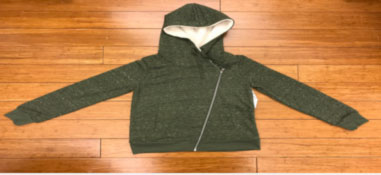 |
|
| HAZARD: | Potential for Strangulation! |
| W.A.T.C.H. OUT! | Drawstrings, typically on the neck or waist of children’s clothing, can catch on slides and other playground equipment leading to death or near strangulation. Similarly, straps from bicycle helmets worn on playgrounds can get caught on equipment leading to entanglement and other serious consequences. |
| FACTS: | Drawstrings: There have been 26 reports (as of 2011 to the CPSC) of children who died when drawstrings from their clothing became entangled on playground slides, school bus doors, or other objects. Helmets: Wearing bicycle helmets can save lives and reduce the risk of injury by at least 45%. But when not riding, children should remove their helmets. The CPSC has reported deaths when straps from children’s helmets snag on playground equipment or other objects, such as trees, and lead to asphyxiation. Playgrounds: There were at least 40 deaths associated with playground equipment between 2001 and 2008; the average victim was 6 years old. Out of the 27 fatalities that were from strangulation or asphyxiation, 20 deaths involved a second product such as a drawstring, leash or jump rope, 12 deaths were associated with slides, and 9 deaths were on swings. Recalls: Many children’s clothes with drawstrings have been recalled due to the risk of strangulation; however, clothes with similar hazards can still be found in stores. The above-pictured RDG Global girl’s hooded sweatshirt, recalled in March 2017, has a drawstring inside the lining of the hood which, as reported by the CPSC, could become entangled or caught on playground slides, hand rails, school bus doors or other moving objects, posing a significant strangulation or an entanglement hazard to children. The CPSC has fined companies for failing to report drawstrings in children’s clothing. In 2014, a company agreed to pay a $600,000 civil fine for failing to report selling 2,100 children’s garments made with drawstrings. |
| TO DO: | Avoid children’s clothing with drawstrings! Remove bicycle helmets while on playground equipment! |
| TRAP: 9 | TOY SWORDS WITH HARD, BLUNT EDGES | |
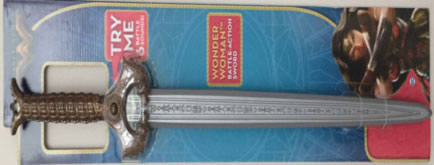 |
||
| HAZARD: | Potential for Blunt Force Injuries! | |
| W.A.T.C.H. OUT! | This rigid, plastic sword associated with the well-known Wonder Woman superhero character, has the potential to cause facial or other impact injuries. This summer and year-round, beware of toy weapons with hard, blunt edges such as this “Battle-Action Sword”. | |
| FACTS: | Hard, rigid parts have the potential to cause eye injury, blunt trauma and other injuries upon impact. | |
| TO DO: | Avoid toys made of hard, rigid materials that may not be suitable for active play between children and may have the potential for impact injuries! | |
| TRAP: 10 | HIGH-POWERED WATER GUNS AND GUNS WITH PROJECTILE AMMUNITION |
 |
|
| HAZARD: | Potential For Eye Injury! |
| W.A.T.C.H. OUT! | High-powered water guns, replica guns with projectile “ammunition,” toy bow and arrows, and other toys that “take aim” can turn summer outdoor play into a serious matter when eyes are involved. Projectile ammunition, even foam darts and water streams, can lead to serious eye injuries. These products are often sold with inadequate or no warnings and without protective eye gear. |
| FACTS: | This “Impact X Stats Blast”, shown in the above (left) photograph, is sold for ages “6+” with 4 darts marketed to “blast up to 70 ft.” The box has no warnings as to a potential for eye injury and no protective eye gear is included. Projectile toy guns have been known to shoot supplied ammunition with enough force to potentially cause eye injuries. Eye injuries to children from non-powder guns alone, such as airsoft and pellet guns, increased exponentially by more than 500% between 2010 and 2012.* |
| TO DO: | Projectile-firing toys can cause serious eye injuries! Avoid toys that have enough force to injure an eye. In addition to toys that shoot “bullets,” watch out for foam dart guns, high-powered water guns, and other projectile toys that could potentially lead to eye contusions and even blindness. |
Any reference to, or photographic representation of, specific products herein neither constitutes nor implies a recommendation or a criticism of such products, but rather is used only as a visual example of the types of potential hazards discussed.
sources: *”Pediatric eye injuries due to nonpowder guns in the United States,” by Rachel Lee, BS, and Douglas R. Fredrick, MD, DOI: The Journal of AAPOS, (April 2016). CPSC, National Helmet Safety Institute. neiss. Academic pediatric journal. Electric Shock Drowning Prevention Association (electricshockdrowning.org). Pool or Spa Submersion: Estimated Nonfatal Drowning Injuries and Reported Drownings, 2017 Report (CPSC, May 2017). Submersions related to Non-Pool and Non-Spa s Product, 2012 report (CPSC, September 2012). Fractures From Trampolines: Results From a National Database, 2002 to 2011 (Journal of Pediatric Orthopaedics , October/November 2014 )
**facts: Injuries and Death Statistics in the U.S.A. unless otherwise specified. Injuries- refer to injuries treated in U.S. hospital emergency rooms
W.A.T.C.H., Inc. is a non-profit organization working to educate the public about child safety. W.A.T.C.H helps raise awareness about the dangers lurking in many toys, children’s products, and recreational activities. Noted trial attorneys, authors and consumer advocates, Edward Swartz (1934-2010), James Swartz, Joan Siff and W.A.T.C.H. have been responsible for the “10 WORST TOYS” nominees released for over 44 years as well as a Summer Safety Report addressing summer hazards for children. For more information on W.A.T.C.H. and the press conference, please visit www.toysafety.org.
James A. Swartz, Director of W.A.T.C.H., noted trial attorney, author and consumer advocate.
Joan E. Siff, President of W.A.T.C.H. & Board Member, Franciscan Children’s.
Franciscan Children’s, located in the Brighton neighborhood of Boston, is the largest pediatric rehabilitation facility in New England. Programs and services offered address the medical, behavioral and educational needs of children. For more information on Franciscan Children’s please visit www.franciscanchildrens.org. Become a fan on Facebook at www.facebook.com/FranciscanHFC or follow Franciscan Children’s on Twitter at www.twitter.com/FranciscanChildrens

